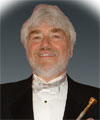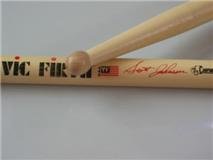Inside the Arc
“The Dut Must Die”
 A hush falls over the audience as the ensemble turns backfield and shapes the hauntingly melodious beginning strain of a deeply moving ballad. The pit percussionists layer tasteful textures onto the rich brass sound, the timpanist applying a perfectly balanced and feather-light touch to a roll even as a gentle wind chime floats above it all. Several thousand people are held enraptured by the delicate mood …. and then you hear them: the ‘duts’!
A hush falls over the audience as the ensemble turns backfield and shapes the hauntingly melodious beginning strain of a deeply moving ballad. The pit percussionists layer tasteful textures onto the rich brass sound, the timpanist applying a perfectly balanced and feather-light touch to a roll even as a gentle wind chime floats above it all. Several thousand people are held enraptured by the delicate mood …. and then you hear them: the ‘duts’!
So much for the magic. It vanishes instantly, replaced by the realization that these particular performers choose to advertise their inability to hold a tempo without grunting out loud for the whole world to hear.
Whats that you say? They’re doing it as a ‘hype’? It?s a tradition, a trademark of some sort?
Hype this!
‘Duts’ are a crutch and always were, invented decades ago as a rehearsal technique by West Coast color guards and co-opted by a prominent drum instructor whose ‘Jonzes’ went on to capture many a drum title. They were never ( repeat: never) intended to be heard by an audience or to become a vehicle for shattering a mood or telegraphing the tribulations of the tempo-challenged.

Scott Johnson Signature marching snare sticks by Vic Firth Available from your authorized dealer. No batteries required. Photo by Shirley Stratton Dorritie
Duts are the poor man’s Dr. Beat, itself an over-used abomination which, truth be told, is almost single-handedly responsible for the nearly total elimination of ‘feel’ from all music played on the field these days. Many of today’s instructors were weaned on this vile formula and consequently wouldn’t recognize a groove if it waltzed right in and gave them a lap dance. The worst part of this soul-killing disease is the ease with which it is transmitted to the students who devour it like mother’s milk and are consequently convinced they can’t live without it.
Putting aside the health hazard of overexposure to continually high dB levels which clearly exceed safety guidelines and are compounded by the fact that this sonic lobotomy is being administered by those claiming to be music educators even as they permanently damage the hearing of their unfortunate students, these practices are musically counter-productive.
Ask any studio musician what it’s like to play to a click track. The best description I ever heard came from Art Blakey, who called it ‘musical root canal’. It takes focus away from listening to the other musicians and creating a unity of blend and feel, and instead places it on slavish submission to a mechanical device. Science fiction writers were once fond of predicting the takeover of human society by robotic artificial intelligence. Ironically, it’s the arts that have been co-opted and we are either blissfully unaware or downright complicit.
Well, I’m calling it for Drum Corps. From here out, the electronic metronome may only be used as a preliminary rehearsal aid, and to set start tempos. The doctor can’t go on the field with you when you perform, anyway. At those moments you must (gasp!) actually listen to each other, watch the conductor, connect to the tempo of those around you, or all of the above.
I hasten to point out that this is what it takes to actually make music as an ensemble. If you need a constant eighth or quarter note pulse during rehearsals, here’s an idea: Let the drummers supply it with their instruments. It will do them good to be responsible for the tempo for a change.
As for the lame vocal duts, if they are audible during a performance they are henceforth subject to adjudication for their musicality, like any other sounds produced by the group. So anyone choosing to insert them should address tone, pitch, rhythmic accuracy, balance and expression. Good luck, especially with that last one.
So here are the new rules:
1. The electronic bull-horn metronome is only to be employed in the early stages of learning, and thereafter only to establish, not maintain, tempo at rehearsal. Furthermore, it will be used only at safe audio levels, below 85 dB in the near field, and the operator must wear hearing protection.
(Pocket ‘in ear’ metronomes can be useful tools for staff and drum majors, though a competent conductor should be able to estimate correct tempos within 3 or 4 beats per minute, and this should be part of the audition for that job.)
2. The ‘dut’ is a rehearsal technique. If ever these vocalizations are evident from the stands, the judge will automatically deduct ‘cool factor’ points for each infraction.
It’s over. No more audible duts in performance, and Dr. Beat hereby has his license revoked for malpractice. Technology will serve art, not the other way around.
The ‘dut’ must die.
Frank Dorritie is one of the legends of the activity .... a performer, instructor, arranger, adjudicator, and observer over the past 5 decades. Frank has been playing the bugle and trumpet since the 1960s, and has performed with artists like Billy Cobham and Maynard Ferguson. He has instructed and/or arranged for the Blue Devils, Cadets, Santa Clara Vanguard, Cavaliers, Chesterton and Tenri High Schools, the Bushwackers, Bridgemen and a host of others. His audio production honors include 9 Grammy Nominations, 2 Grammy Awards and membership in both the World Drum Corps and Buglers Halls of Fame. He is active internationally as a clinician and adjudicator, holds the DCA Soprano/Trumpet/Tenor Individual titles for 2003, 2005 and 2006. Frank also chairs the Department of Recording Arts at Los Medanos College. His popular brass method book, “Power and Endurance”, is available from Xtremebrass.com. The opinions expressed in this column are strictly those of the author.
Posted by Frank Dorritie on Tuesday, October 12th, 2010. Filed under Inside the Arc.
